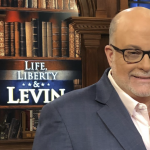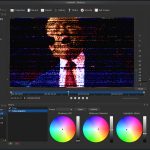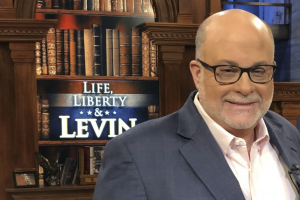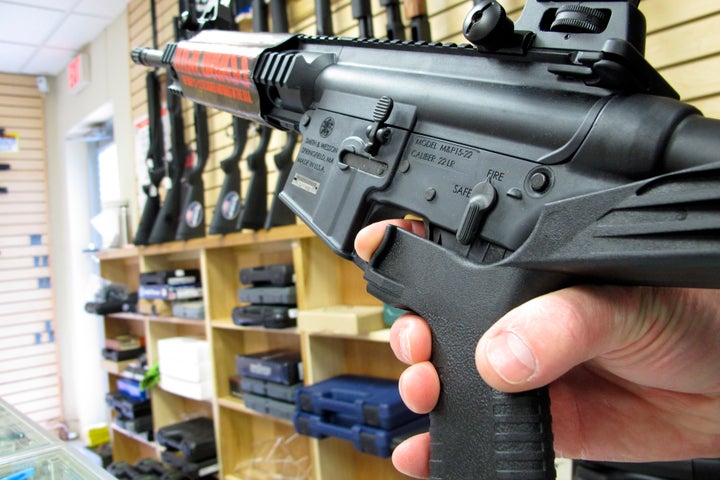
In a video clip uploaded three months ago, one of YouTube’s most prominent gun reviewers took aim at a steel target with a Glock 17 pistol equipped with a device called an autosear.
“All right, full auto!” he said as about half the spray of bullets ricocheted off the coffin-shaped target while the rest flew into the dirt behind it. He burst through the entire magazine in less than a second.
Advertisement
“I can’t believe how many rounds I burned through already,” Hickok45 said after ringing more steel, then exploding a terra cotta pot, popping several soda bottles and knocking over a bowling pin. “It’s fun. And we wanted to bring the fun to you.” The video has attracted 681,000 views.
Congress first tightened regulation of machine guns back in 1934, in response to Prohibition-era gang violence. Modern machine guns and conversion devices have been banned from civilian use since 1986. Unlawful possession of an autosear can land an offender in prison for up to a decade, whether or not the device is attached to a pistol.
But machine guns are making a fast comeback.
Tinkerers are constantly devising new ways to shoot semiautomatics faster. The 3D printer has made it possible to turn a common pistol into a machine gun for less than $100. And the spread of information in the digital age has made it easier for enthusiasts like Greg Kinman of Tennessee, who posts on social media as Hickok45, to jump through the hoops necessary to buy or build fully automatic weapons legally.
That rapidly growing market has created new challenges for law enforcement. The Bureau of Alcohol, Tobacco, Firearms and Explosives (ATF) is waging a public education campaign to help dispel the notion that machine gun conversion devices like the ones portrayed in Hickok45′s video are legal. Some Democratic-led jurisdictions are taking legal action against Glock in an attempt to make its guns harder to modify.
Advertisement
But lawmakers and regulators face a complex problem that piecemeal efforts are unlikely to solve. The result is that faster-shooting guns — both legal and illegal — are likely to become an increasingly common fact of modern American life.
Civilian-Legal Machine Guns
Machine guns have played a niche role in the civilian firearms market for about as long as they’ve existed.
Congress sharply restricted civilian access with the National Firearms Act of 1934 (NFA) but didn’t ban machine guns entirely. Instead, it required civilians to register fully automatic weapons and pay a $200 tax each time one changes hands. The transfer cost — using only their hands and a rubber band or belt loop.
Federally Licensed YouTubers
Enthusiasts who want truly unfettered access to modern machine guns are taking advantage of the most glaring loophole by becoming federally licensed firearms dealers.
Individuals can obtain a Federal Firearms License, or FFL, and sell guns out of their homes. An FFL holder can then apply for a Special Occupational Tax, or SOT, that allows the holder to possess and transfer modern machine guns legally. A separate SOT allows the holder to build machine guns, including at home.
Advertisement
Kinman did not respond to a request for comment for this story, but the Hickok45 poster says in one of his videos that he holds an FFL/SOT combination that allows him to possess automatic weapons legally.
Those who deal in machine guns are free to shoot them, noted Cargill. Cargill holds an FFL/SOT combination that allows him to manufacture automatic weapons.
“I can build my own machine gun — a modern-day machine gun,” Cargill said. “I can take it to the range and shoot it every day, as long as that machine gun comes back to the store every night. It has to go to sleep in the gun store.”
A longstanding ATF ruling holds that making legally obtained machine guns available for others to shoot at an onsite shooting range owned by the FFL holder is “not considered to be a sale, disposition, or delivery of the firearms,” an ATF official wrote in an email to HuffPost. “The on-premises rental of NFA firearms owned by an FFL is therefore permitted.”
The ATF requires machine gun sellers to have a business intent when applying for their license — it’s not supposed to act as a backdoor to owning machine guns.
Advertisement
“It has to be for a legal purpose,” an ATF official told HuffPost. “It cannot just be, ‘I got my FFL and SOT — I’m going to go and make all the machine guns I want.’ You cannot do that.”
Several companies online offer to help the average citizen get their hands on a machine gun, often emphasizing the novelty of being able to access post-1986 machine guns. YouTube is chock-full of machine gun demonstrations by people claiming to possess legal authority to shoot automatic weapons.
“This is a machine gun,” a YouTuber who posts as “PSR” says in one video. “This is a Glock switch. It is not mine. I am not in possession of it. I am on the range and my friend, who has an FFL07, SOT Class 2, is the owner of this machine gun.”
“While there are plenty of people running around with these illegally, of course, this is one that is legal, and my friend behind the camera is supervising me as I test fire this machine gun,” the YouTuber added. “With that said. Fuck the NFA. Fuck the machine gun ban.”
A Thriving Black Market
The same tinkering that birthed bumps stocks has turbocharged the black market for automatic weapons. It doesn’t take much technical expertise to convert many semiautomatic firearms into automatic ones. Attaching an autosear, like the one in Hickok45′s video, onto the firearm will do the job.
Advertisement
The autosear has existed for a long time. But over the last few years, autosears fitted for Glock pistols have proliferated to such a degree that many people have come to call them “Glock switches.”
The overwhelming majority of them are made illegally with 3D printers or sold on shady websites and imported from China and Russia. They often come equipped with trademark-infringing branding that gives the false impression that they’re made by Glock itself.
The ATF has confiscated some 31,000 of them over the last five years. Glocks equipped with switches are increasingly showing up at crime scenes — most notably a mass shooting in Sacramento that left six dead and a dozen more wounded in 2022.
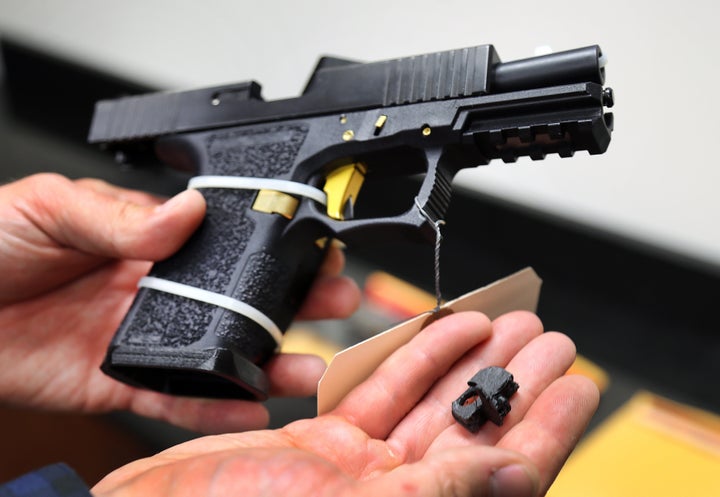
John Tlumacki/The Boston Globe via Getty Images
Reformers have taken aim at Glock itself, accusing the gun maker of failing to act while criminals take advantage of a flaw in its pistols’ design. Unlike many other popular pistols, Glocks typically feature a removable slide plate. Once removed, turning the pistol into an automatic weapon is a simple job — a small protrusion from the autosear blocks a part of the gun called the trigger bar from rising and halting the firing pin from firing another round.
Advertisement
The city of Chicago sued Glock last month under a new Illinois law that exposes firearm manufacturers to civil claims from people harmed by gun violence. The lawsuit asks the courts to force Glock to modify its pistol designs to make them harder to convert into machine guns.
The city of Honolulu voted last month to file a similar lawsuit, though it has yet to do so. And this month, New York state Sen. Zellnor Myrie filed a bill that would ban the sale of “easily modified pistols.” Though the text names no brand, Myrie’s proposition was directed squarely at Glock.
Glock did not respond to HuffPost’s requests for comment about the legal actions filed against it.
But the National Shooting Sports Federation, the firearm industry trade group, views the attacks on Glock as misguided and questions the legal logic of the proposed New York bill. The proposal, which lacks a technical definition of “easily modifiable pistol,” would criminalize pretty much all striker-fired pistols, according to Keane.
“Changing the design of a gun is not an easy thing to do,” Keane said. “[Glock] is doing what it can, but changing the design and making a less-reliable design is not advisable. … Reliability is safety.”
Even if reformers compelled Glock to modify its design tomorrow, there would still be millions of the current generations lingering on the market indefinitely. Those willing to break the law would have a wide array of options for turning semiautomatic firearms into fully automatic weapons. Other pistol-makers struggle with the same problem of black market modifications as Glock. And firearms are simple machines. A savvy enthusiast can turn an an AR-15 into a machine gun with a coat hanger.
Advertisement
“It’s not difficult to do any of this stuff,” said Cargill, the gun store owner. “It’s a matter of do you want to become a felon or not. Most people want to do things the right way.”

